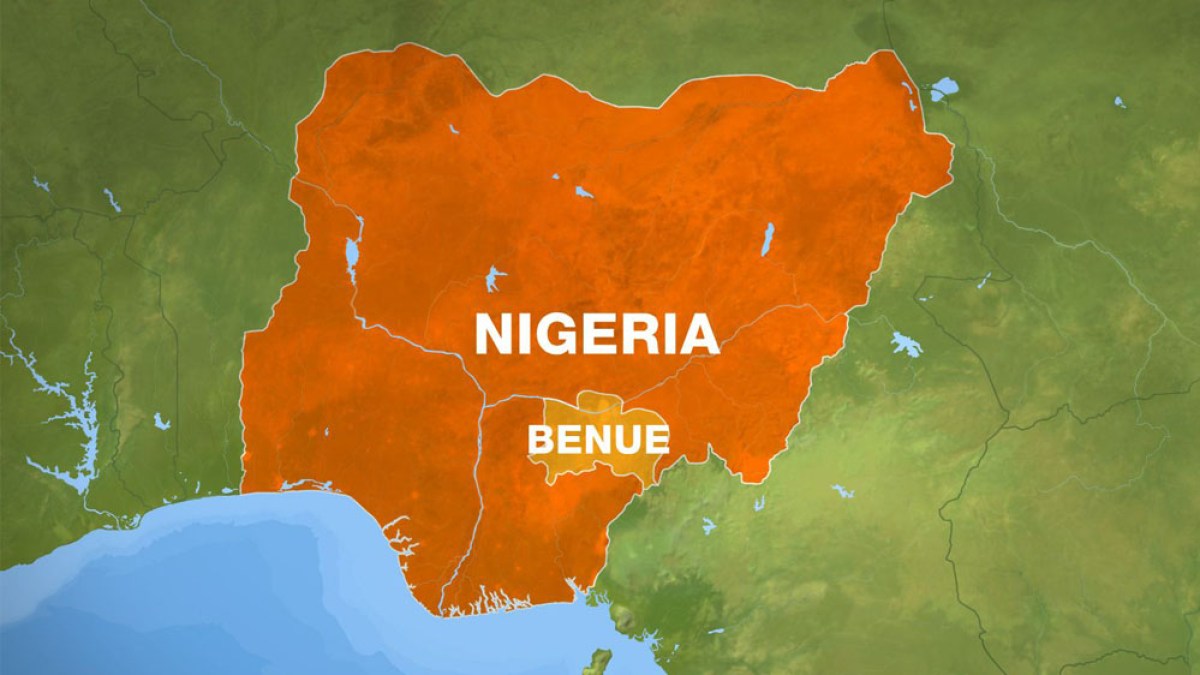Science
Fungal Networks Are Often Hidden and Overlooked. But They Can Help Save Us.

About 500 million years ago, when aquatic plants began to inch toward land, they couldn’t live there on their own. They enlisted fungal mycelium networks, which served as their root systems for a few tens of millions of years before they developed their own and could live independently. Still, about 90 percent of plants depend on symbiotic fungi.
But during that time, the planet was transformed: Early plants and their fungal networks helped lower the amount of atmospheric carbon dioxide by 90 percent, enabling the conditions for life on Earth as we know it.
These days, human activities are sending atmospheric carbon dioxide levels soaring (though not quite as high as during the pre-fungal period), and scientists and other fungal enthusiasts are hoping that fungi might be able to help us sustain our own existence by drawing down all that carbon once again.
To Merlin Sheldrake, a biologist and author of “Entangled Life: How Fungi Make Our Worlds, Change Our Minds, and Shape Our Futures,” that is really just one of the amazing things fungi of all kinds do: as “ecosystem engineers,” and as the enablers of our very lives on this planet, whose centrality we ignore “at our peril,” he said.
The following conversation has been edited and condensed.
There has been such an explosion of interest in fungi recently, and I’m wondering how you understand that, or why you think that has come about. Certainly your book is a big part of that.
I think there are a few reasons. One is that we know more about fungi than we used to — technological developments over the last couple of decades have led to really exciting discoveries and have granted new access to fungal lives.
There is also a growing awareness of the fundamental interconnectedness of the living world — driven both by new research and by the worsening fallout from our ecocidal activities — which has prompted an ecological turn in academic and popular discourse. Fungi embody the most basic principle of ecology: that of the relationships between organisms. Mycelium is ecological connective tissue and reminds us that all life-forms, humans included, are bound up within seething networks of relationships, some visible and some less so.
Fungi may have become poster organisms for ecological thinking, but interest in fungal lives has also been driven by the rise of network science. “Network” has become a master concept, from computing to sociology, to neuroscience, ecology, economic systems. Fungi are ancient living networks, and the recent surge of interest in these organisms reflects our modern fascination with the extraordinary power of networks, from transport systems to the internet, to shape our lives and cultures.
And then there’s the urgency. There are a number of ways that we might partner with fungi to help us to adapt to life on a damaged planet, and we don’t know nearly as much as we should. Multiplying ecological emergencies have brought about renewed interest in the fungal world, and there are many radical mycological possibilities.
Some fungi produce powerful antiviral compounds which reduce colony collapse disorder in honeybees. In the process of mycoremediation, fungi can be harnessed to break down toxic pollutants. In mycofabrication, fungi are used to produce sustainable materials, from bricks to leather. Not to mention the many ways that fungi change the way we think, feel and imagine.
I was reading the op-ed you co-wrote in The Guardian about the opportunity that mycorrhizal fungal networks present for carbon and nutrient cycling and storage. How do you think about bridging the gap between the popular cultural interest in fungi and organizing for conservation of these organisms?
Fungi are a kingdom of life that have not had a kingdom’s worth of attention. They are neglected in conservation frameworks, educational curriculums, and scientific and medical research. Part of the challenge is raising awareness of fungal life and the many vital roles they play in the biosphere, of course.
But this is only the start. I work with an organization called the Society for the Protection of Underground Networks, which is trying to create robust maps of the planet’s fungal communities that can be used by decision makers to take account of the life in the soil. I work with two other organizations called Fauna Flora Funga and the Fungi Foundation, which are working to get fungi written into conservation frameworks, many of which currently exclude this third kingdom of macroscopic life. When we destroy fungal communities, we undermine ancient life support systems that make so much of life possible.
Even without the data, when we just talk about carbon sequestration in forests or grasses, mycorrhizal networks don’t usually enter into the conversation. Maybe that’s the bias of us being primarily visual creatures, which is that we look for the thing that we can see.
Despite the fact that soils are a major carbon pool, we tend to neglect underground ecosystems. This is partly because we don’t know much about what happens underground and the many lives that are lived out of our sight. It’s difficult to study these organisms and what they do. In a recent paper that I was a part of, we discuss these challenges in more depth. Our estimates of the carbon that moves into the soil through mycorrhizal fungi are imperfect and should be interpreted with caution, but they give an indication of how important mycorrhizal relationships are in mediating nutrient fluxes in global ecosystems.
When I was reading your book, I often thought, I can’t believe I don’t know this. Fungi have made life on Earth possible, and yet so much of what you wrote about was totally new to me. It made me think, how do we know anything that we think we know?
I love studying the living world because so often our enquiries render the familiar unfamiliar. Fungi, like so many organisms, invite us to think in new ways about many well-handled concepts that we might have thought we understood. There are so many urgent challenges we face today, and there are many ways we can partner with fungi to help adapt to life on a damaged planet. And there is so much we don’t know.

Science
Pressure is mounting for soil testing post-fire cleanup. The Newsom administration is downplaying the concerns

Elected officials in California are calling on the Federal Emergency Management Agency and the Newsom administration to pay for soil testing on properties destroyed in the Eaton and Palisades wildfires, underscoring the public health risk and financial burdens that could be faced by survivors seeking to rebuild in Altadena and Pacific Palisades.
FEMA, the agency leading the wildfire recovery efforts, has come under heavy criticism for its decision not to test properties for contaminants after removing wreckage and up to 6 inches of top soil. That policy differs from how California has handled virtually all wildfire recoveries in the recent past.
After every major wildfire since 2007, federal and state disaster agencies have conducted soil sampling to ensure that debris-cleared properties do not contain unhealthy levels of lead and other toxic metals. In these cases, at properties where agencies detected high levels of contaminants, they typically deployed cleanup crews to remove another layer of soil, and then would perform another round of soil testing. This would be repeated until testing showed that the soil met state standards.
Following the 2025 L.A. wildfires, however, FEMA has repeatedly refused to pay for soil testing, contending that removing wildfire debris and up to 6 inches of topsoil from portions of destroyed homes is sufficient to eliminate any immediate health threats.
This month, U.S. Rep. Judy Chu (D-Pasadena) led a contingent of 28 federal legislators in writing a letter demanding that FEMA reassess its decision. The letter, sent June 3, calls for federal funding for soil testing and for further remediation at properties with soil contamination above California’s standards.
In a separate letter, sent Thursday, state Sen. Ben Allen (D-Santa Barbara) and three other state legislators urged California environmental regulators to step in and conduct soil sampling if federal disaster agencies continue to resist soil testing protocols. The letter recommends that state officials tap a $2.5-billion emergency relief package signed by Gov. Gavin Newsom in January, which includes funding for debris cleanup and post-fire assessments.
Allen’s letter said the state’s decision to leave burned-down homes untested “will reverse precedent and lower standards for future disasters.” Without comprehensive government-led soil testing, the letter argued, homeowners would be left to pay for soil sampling themselves or risk returning to a property with unsafe levels of contamination.
“It is deeply unjust that this responsibility has fallen to fire survivors — already burdened by the challenges of total loss recovery — simply because federal partners like FEMA and the U.S. Army Corps of Engineers have failed to lead,” write Allen and his co-signatories in the letter. “The State of California now has the opportunity to fill that gap with leadership that centers science, transparency, and community needs.”
In February, the Newsom administration asked FEMA to reconsider its decision not to conduct post-cleanup soil testing, stressing that fire-related contamination can remain undetected and pose public health risks, even after cleanup crews finish their first pass at a property. But federal officials swiftly rejected the request, and instead suggested that state and local officials should perform this work.
Since then, the pressure has continued for California officials to step up.
Last month, a coalition of environmental researchers wrote a letter to the Newsom administration, urging state agencies pay for soil testing.
The Newsom administration appears to be walking back its concerns about lingering fire-related contamination. In a June 6 letter replying to those researchers, CalEPA Secretary Yana Garcia downplayed the risks of lingering contamination from the Eaton and Palisades wildfires.
Although air quality and soil testing have found high levels of lead downwind of the Eaton fire, Garcia said that some of this soil contamination could have resulted from the historical use of leaded gasoline in cars and heavy industry.
“It is in this environment, not a clean slate, that the Palisades and Eaton Fires occurred,” she wrote in her letter.
Soil testing carried out by Los Angeles Times journalists in March provided the first evidence that homes cleaned by federal cleanup crews still contained elevated levels of lead and arsenic. Soon after, the Los Angeles County Department of Public Health also published preliminary data finding 27% of soil samples collected at already-cleaned homes still had lead above state standards for residential properties.
Despite these soil sampling results, Garcia signaled she is satisfied with the federal cleanup.
“Sampling results so far are demonstrating the effectiveness of the existing clean-up approach,” Garcia wrote in the letter.
(The health department denied an L.A. Times public records request seeking the raw data showing the extent of the soil contamination detected, saying the results had yet to be finalized. The department also declined requests for a copy of its contract with Roux Associates, including how much the county had paid the consultant to perform the soil sampling.)
Garcia stressed that blood testing around the wildfire-affected communities showed overall exposure was low. She did not directly respond to the researchers’ request to pay for soil testing for the L.A. wildfires.
Sen. Allen and the three state legislators who cosigned his public letter are seeking more answers from state environmental agencies. The letter calls for state environmental agencies to convene a public meeting by the end of June to discuss post-wildfire soil testing protocols and plans for the L.A. wildfires.
CalEPA officials did not immediately respond to a request for comment.
Science
Former Cedars-Sinai OB-GYN surrenders license after sexual abuse complaints

Former Cedars-Sinai Medical Center obstetrician-gynecologist Barry J. Brock has surrendered his medical license following an accusation of negligent care from the state medical board.
Brock, 75, signed an agreement late last month to give up the license he has held since 1978, rather than contest an accusation the Medical Board of California filed in September regarding a former patient’s treatment. The surrender took effect on Wednesday.
While Brock “doesn’t admit any factual allegations,” his attorney Tracy Green said, he elected to surrender his license rather than invest time and money into a hearing.
Under the terms of the agreement, Brock is barred from legally practicing medicine in California for the rest of his life.
Brock retired from medicine in August. Since then, at least 176 women have filed lawsuits alleging that Cedars-Sinai and other facilities where Brock worked knowingly concealed his sexual abuses and misconduct, including medically unjustifiable procedures that at times resulted in lasting physical complications.
Brock has denied all allegations of impropriety. The OB-GYN was a member of the Cedars-Sinai physician network until 2018 and retained his clinical privileges there until mid-2024.
Cedars-Sinai confirmed in July that it suspended Brock’s hospital privileges after receiving “concerning complaints” from former patients. His privileges were terminated a few months later.
“The type of behavior alleged about Dr. Barry Brock is counter to Cedars-Sinai’s core values and the trust we strive to earn every day with our patients,” the medical center said in a statement. “We recognize the legal process must now take its course, and we remain committed to Cedars-Sinai’s sacred healing mission.”
The accusation that led to the surrender of his license focused on a patient who sought treatment in 2018 for a blighted ovum, a form of miscarriage in which the fertilized egg fails to develop into an embryo.
According to the complaint, the patient reported to Brock’s office in September 2018 for a dilation and curettage to remove remaining tissues from her uterus.
Brock ordered the patient to undress in front of him, the complaint stated, and didn’t wear gloves during the procedure, which was done without a chaperone present.
The patient experienced severe pain during the visit and bled for two months afterward, the complaint said, and no follow-up care was provided. When she visited a physician’s assistant in November 2018, the complaint said, she learned that Brock had failed to complete the dilation and curettage successfully, and she had to undergo the process a second time to remove the remaining tissue.
The complaint alleged that Brock didn’t administer sufficient pain medication and failed to properly complete the procedure or follow up with pathology findings.
While Brock’s license surrender resolves this accusation, he still faces the civil lawsuits.
Suits were filed on behalf of 167 women last year, and nine more women sued the former physician earlier this month, alleging that Brock groped their breasts and genitals inappropriately during appointments, often with bare hands, and made sexually harassing comments.
“This is why these civil lawsuits and these women coming forward … are so, so important. He can’t avoid this,” said Lisa Esser, an attorney representing the nine plaintiffs. “He’s going to be held accountable.”
Science
State rescinds suspension efforts for troubled nursing home in Hollywood

The California Public Health Department has dropped efforts to suspend the license of a Hollywood nursing home whose actions were found to have led to two patient deaths in recent years.
Brier Oak on Sunset was among seven Los Angeles County facilities that received notice last month that the state was moving to suspend their licenses.
At the time, the state believed all seven companies had received at least two “AA” violations within the last two years, a spokesperson for the Public Health Department said.
An AA violation is a relatively rare penalty issued for errors that contribute substantially to a resident’s death. California law allows the suspension or revocation of a nursing home’s license once a facility gets two such violations within a 24-month period.
Although Brier Oak received its AA violation notices 22 months apart, the residents’ deaths took place about 26 months apart, state records show.
“We recently determined that Brier Oak’s Notice was based on citation issuance date, not the date of the incidents that gave rise to the citations,” the health department said in a statement. “Therefore, this Notice of Suspension has been rescinded.”
Brier Oak on Sunset didn’t immediately respond to a request for comment.
The state investigation found that staff oversights at Brier Oak led to the deaths of two residents in 2022 and 2024.
In August, a patient died after rolling off a bed while her nurse was tending to a different patient, the state said in its citation report, which noted that paramedics found the woman lying on the floor in a pool of blood.
In May 2022, a patient died roughly 50 hours after her admission to Brier Oak. An investigation determined that staff neglected to administer crucial medications, the state said.
In a September 2022 phone interview, the patient’s family member told state investigators that “Resident 1 ‘did not get her medications for two days [from admission] and staff let her die,’” the state wrote in its report. The family member continued: “She did not deserve to die.”
The patient’s family was awarded $1.29 million in arbitration this month after a judge found that the facility was severely understaffed at the time of her arrival and should not have admitted her.
“Respondent’s Facility acted with recklessness in that they knew it was highly probable that their conduct would cause harm, and they knowingly disregarded this risk,” Superior Court Judge Terry A. Green wrote in the interim arbitration award.
License suspension efforts are still proceeding against Antelope Valley Care Center in Lancaster, Ararat Nursing Facility in Mission Hills, Golden Haven Care Center in Glendale, Kei-Ai Los Angeles Healthcare Center in Lincoln Park, Santa Anita Convalescent Hospital in Temple City and Seacrest Post-Acute Care Center in San Pedro.
Attorneys for Ararat said that the suspension was “unwarranted” and that it will be appealing. The other facilities didn’t respond to requests for comment.
-

 West1 week ago
West1 week agoBattle over Space Command HQ location heats up as lawmakers press new Air Force secretary
-

 Technology1 week ago
Technology1 week agoiFixit says the Switch 2 is even harder to repair than the original
-

 Business1 week ago
Business1 week agoHow Hard It Is to Make Trade Deals
-

 Movie Reviews1 week ago
Movie Reviews1 week agoPredator: Killer of Killers (2025) Movie Review | FlickDirect
-

 Politics1 week ago
Politics1 week agoA History of Trump and Elon Musk's Relationship in their Own Words
-

 News1 week ago
News1 week agoAmid Trump, Musk blowup, canceling SpaceX contracts could cripple DoD launch program – Breaking Defense
-

 World1 week ago
World1 week agoMost NATO members endorse Trump demand to up defence spending
-

 Technology1 week ago
Technology1 week agoVolvo’s new seatbelts use real-time data to adapt to different body types













